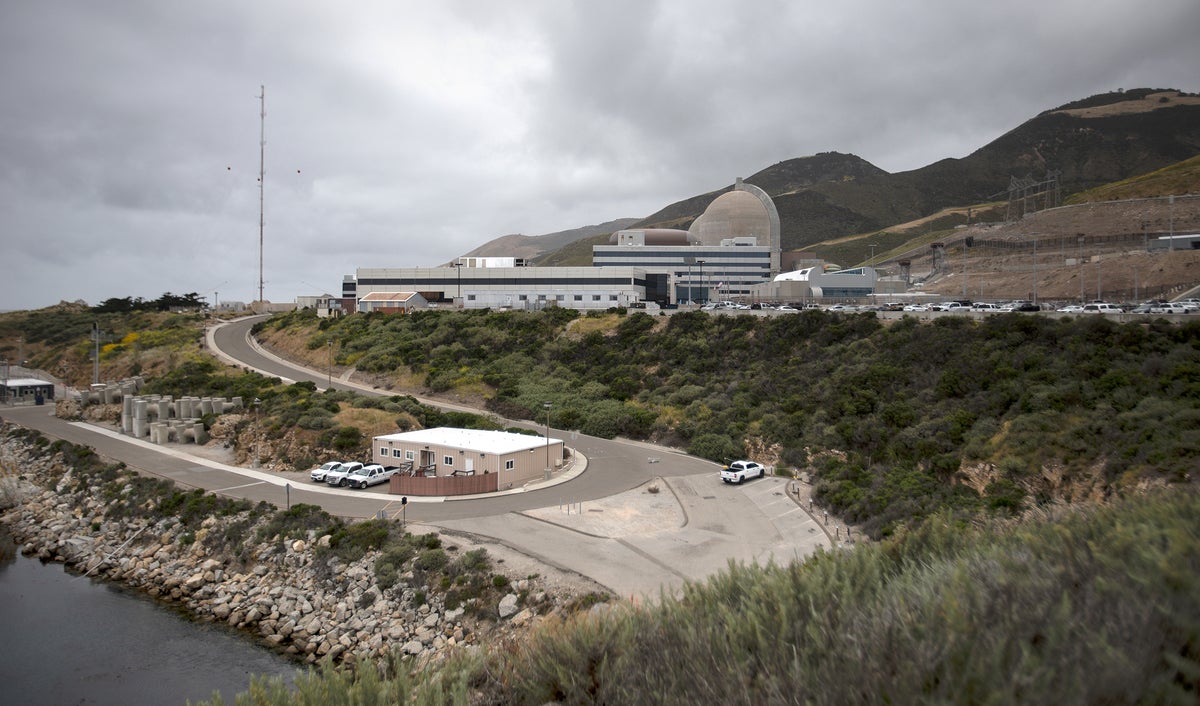
Environmental groups called on federal regulators Thursday to immediately shut down one of two reactors at California’s last nuclear power plant until tests can be conducted on critical machinery they believe could fail and cause a catastrophe.
Friends of the Earth and Mothers for Peace said in a petition filed with the Nuclear Regulatory Commission that tests and inspections have been delayed for nearly 20 years on the pressure vessel in the Unit 1 reactor at the Diablo Canyon Nuclear Power Plant, midway between Los Angeles and San Francisco.
Instead, the groups argue, operator Pacific Gas & Electric has relied on data from similar reactor vessels to justify continued operations at Diablo Canyon, while dismissing indications that the steel wall in Unit 1 might be deteriorating from sustained exposure to radiation and is becoming susceptible to cracking, a condition technically known as embrittlement.
“We will not sit idly by while PG&E cuts corners on Unit 1’s safety,” Hallie Templeton, legal director for Friends of the Earth, said in a statement.
The vessels are thick steel containers that hold nuclear fuel and cooling water in the reactors.
The statement from the anti-nuclear groups contended that PG&E “has repeatedly postponed essential metallurgical tests and ultrasound inspections over the past two decades” on the vessel.
PG&E spokesperson Suzanne Hosn said in a statement that the plant has an excellent safe operating record, and that the NRC's current assessment places it among the highest-performing plants in the nation.
“Analysis has demonstrated that the reactor vessels for both Units 1 and 2 currently meet the NRC’s acceptance criteria,” Hosn wrote. “We are in full compliance with industry guidance and regulatory standards regarding our program to monitor, evaluate and ensure reactor vessel safety.”
Hosn said additional testing was planned but didn't provide a date when that would occur.
The petition marks the latest development in a long fight over the operation and safety of the seaside plant, which began operating in the mid-1980s.
PG&E agreed in 2016 to shutter the plant by 2025, but at the direction of the state changed course and now intends to seek a longer operating run for the twin reactors. Democratic Gov. Gavin Newsom, who once was a leading voice to close the plant, said last year that Diablo Canyon’s power is needed beyond 2025 to ward off possible blackouts as California transitions to solar and other renewable energy sources.
Friends of the Earth, a longtime critic of plant safety, was a central player in negotiating the 2016 closing agreement. The filing comes just weeks after a state judge rejected a lawsuit filed by the group that sought to block PG&E — the state’s largest utility — from seeking to extend the plant's operating life.
The petition, filed Thursday in Washington, was accompanied by a 46-page report by Digby Macdonald, a University of California, Berkeley, professor in nuclear engineering and materials science, who wrote that continued operation of the Unit 1 reactor “poses an unreasonable risk to public health and safety due to serious indications of an unacceptable degree of embrittlement.”
“The reactor should be closed until PG&E obtains and analyzes additional data regarding its condition,” wrote Macdonald, who was retained by the environmental groups.
The petition asks the NRC to convene a hearing to review a 2003 decision by agency staff to extend the testing schedule for the Unit 1 pressure vessel until 2025. According to the groups, the last inspections on the vessel took place between 2003 and 2005. The utility postponed further testing in favor of using results from similar reactors to justify continued operations, they said.
In his report, Macdonald concludes PG&E should have accelerated its testing schedule, not delayed it, to assess possible defects. He noted that unlike most other reactor safety components, the pressure vessel has no independent backup system that can be called upon if it should crack or fracture and lose essential cooling water.
He added that obtaining more testing data on Unit 1 is especially important because its steel has excessive copper and nickel content "that render it more vulnerable to embrittlement.”
The “NRC currently lacks an adequate basis to conclude that Diablo Canyon Unit 1 can be operated safely,” Macdonald said.
Construction at Diablo Canyon began in the 1960s. Critics have long argued that potential shaking from nearby earthquake faults not recognized when the design was approved could damage equipment and release radiation. One nearby fault was not discovered until 2008. The groups argue that the embrittlement assessment is even more critical, given the plant's seismic vulnerabilities.
PG&E has maintained the plant is safe, an assessment endorsed by the NRC.
California is the birthplace of the modern environmental movement and for decades has had a fraught relationship with nuclear power, which doesn’t produce carbon pollution like fossil fuels but leaves behind waste that can remain dangerously radioactive for centuries. The Newsom administration is pushing to expand solar power and other clean energy as the state aims to cut emissions by 40% below 1990 levels by 2030.
Newsom and the Democratic-dominated Legislature agreed last year to open the way for a longer operating run at the plant, essentially unwinding the 2016 agreement to close the plant.
However, it’s not yet clear if the reactors will continue operating beyond the expiration of their federal operating licenses — 2024 for Unit 1, and 2025 for Unit 2 — since many regulatory milestones and unanswered questions remain.
The utility has said it plans to file for license extensions with the NRC by the end of the year.
According to the NRC, embrittlement occurs as a result of reactor operation when neutrons from the nuclear fuel irradiate the steel plates and welds used to construct the reactor vessel. The irradiation embrittles the steel, making it less tough.







